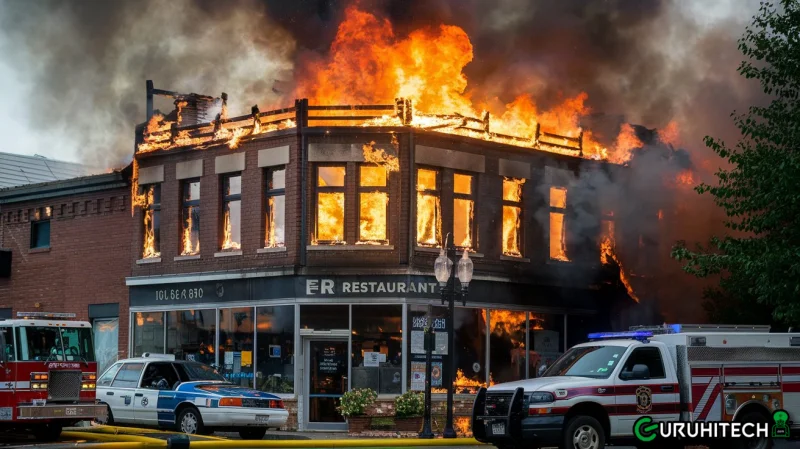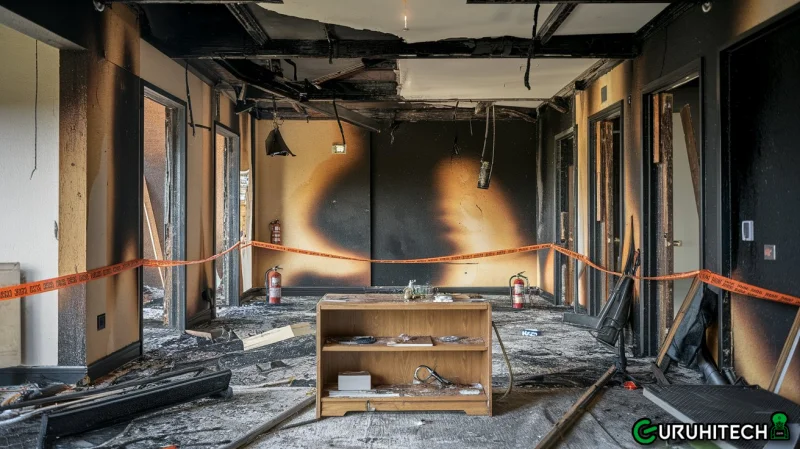How Technology is Revolutionizing Fire Damage Restoration

Fire damage restoration has always been a critical aspect of disaster recovery, helping individuals and businesses recover from the devastating effects of fires. Traditional methods of restoration often required manual processes, long timelines, and extensive labor. However, advancements in technology, including asbestos surveys, are transforming the fire damage restoration industry, making it more efficient, precise, and faster than ever before.
The Impact of Technology on Fire Damage Restoration
1. Drones for Damage Assessment
One of the most significant technological breakthroughs in fire damage restoration is the use of drones. Drones equipped with high-resolution cameras and thermal imaging sensors are now being used to assess damage more accurately and safely. Rather than risking human lives to inspect unstable structures, drones can quickly provide detailed views of affected areas, including areas that are difficult to reach.
With drones, restoration professionals can assess the extent of the fire damage from above, capturing images and videos to identify hot spots, structural damage, and hazardous areas. This speeds up the evaluation process and ensures that restoration efforts are based on a comprehensive understanding of the damage.
2. Artificial Intelligence (AI) for Damage Analysis
AI is becoming increasingly useful in the fire damage restoration process, particularly in damage analysis. AI algorithms can analyze vast amounts of data, such as photos, videos, and sensor readings, to assess fire damage more accurately. This technology can detect patterns in the fire’s spread, identify the most severely damaged areas, and predict which parts of the structure are salvageable.
AI-driven software can also streamline insurance claims by providing precise damage assessments, reducing human error, and speeding up claim processing. For restoration companies, this means faster project initiation and more accurate cost estimations, benefiting both the client and the company.
3. Thermal Imaging Technology
Thermal imaging cameras have become an indispensable tool in fire damage restoration. These devices detect heat signatures, which helps identify areas where fire damage is still active or smoldering. Traditional methods might overlook areas that seem cooled but still harbor heat pockets, increasing the risk of reignition.
Thermal imaging also aids in the identification of hidden structural damage, allowing restoration teams to better target areas that need repair or removal. By improving the accuracy of assessments, thermal imaging ensures that restoration work is comprehensive, reducing the likelihood of further issues down the line.

4. Dehumidification and Air Scrubbing Technologies
Fire damage is often accompanied by water damage due to firefighting efforts. Advanced dehumidification and air scrubbing technologies are now being used to quickly remove excess moisture from the environment and purify the air from harmful particulates.
High-powered industrial dehumidifiers can efficiently dry out waterlogged areas, preventing mold growth and further structural damage. Similarly, air scrubbers use specialized filters to remove smoke particles, soot, and volatile organic compounds (VOCs) from the air, improving indoor air quality during the restoration process.
5. 3D Scanning for Precise Restoration Planning
3D scanning technology is another innovation making fire damage restoration more precise. By creating detailed 3D models of fire-damaged properties, restoration teams can map out the affected areas with incredible accuracy. This allows for better planning, as contractors can measure the extent of the damage, estimate material needs, and devise restoration strategies before beginning work.
This technology also aids in tracking the progress of the restoration, offering before-and-after comparisons and ensuring that every aspect of the project is addressed. Additionally, 3D scanning can provide critical documentation for insurance claims, allowing adjusters to see the full scope of damage.
6. Mobile Apps for Real-Time Communication
Communication is crucial during the restoration process, particularly between homeowners, insurance adjusters, and restoration teams. Mobile apps and cloud-based platforms are now being utilized to facilitate real-time updates and communication between all parties involved.
Restoration professionals can upload photos, status updates, and reports directly to the platform, giving clients and insurers a clear view of the project’s progress. These tools ensure transparency, speed up decision-making, and help avoid costly delays caused by miscommunication.
The Future of Fire Damage Restoration
The future of fire damage restoration is bright, as emerging technologies like robotics, augmented reality (AR), and the Internet of Things (IoT) continue to be integrated into the industry. Robotics, for instance, could be used to perform dangerous tasks in hazardous environments, while AR could provide restoration teams with real-time data overlays to guide their work.
IoT sensors are also likely to play a significant role, offering early detection systems that alert property owners of potential fires, allowing for quicker responses and minimizing damage.
Conclusion
Technology is revolutionizing fire damage restoration by improving the accuracy, efficiency, and safety of the restoration process. From AI-powered assessments to drones, 3D scanning, and advanced dehumidification, these innovations ensure that restoration efforts are faster, more effective, and ultimately more successful. As the industry continues to adopt new technologies, property owners and businesses affected by fire can expect shorter recovery times and more comprehensive solutions for getting back on their feet.
Ti potrebbe interessare:
Segui guruhitech su:
- Google News: bit.ly/gurugooglenews
- Telegram: t.me/guruhitech
- X (Twitter): x.com/guruhitech1
- Bluesky: bsky.app/profile/guruhitech.bsky.social
- GETTR: gettr.com/user/guruhitech
- Rumble: rumble.com/user/guruhitech
- VKontakte: vk.com/guruhitech
- MeWe: mewe.com/i/guruhitech
- Skype: live:.cid.d4cf3836b772da8a
- WhatsApp: bit.ly/whatsappguruhitech
Esprimi il tuo parere!
Ti è stato utile questo articolo? Lascia un commento nell’apposita sezione che trovi più in basso e se ti va, iscriviti alla newsletter.
Per qualsiasi domanda, informazione o assistenza nel mondo della tecnologia, puoi inviare una email all’indirizzo [email protected].
Scopri di più da GuruHiTech
Abbonati per ricevere gli ultimi articoli inviati alla tua e-mail.
